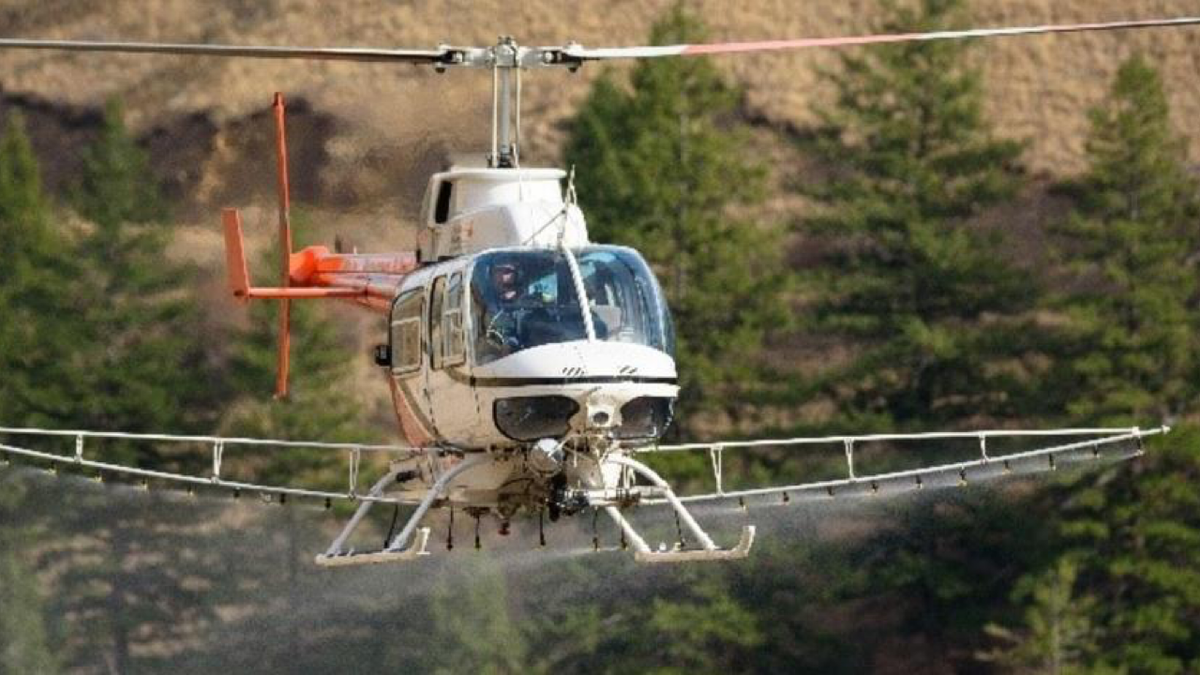Helicopters to apply herbicide to control invasive weeds in Bear Lake Plateau in October

News Release
The following is a news release from Idaho Fish and Game.
POCATELLO, Idaho (News Release)—Hunters and outdoor enthusiasts planning to visit the western portions of the Bear Lake Plateau, specifically the Merkley Mountain/Mahogany Ridge areas and/or the Bear Lake State Park (IDPR-managed State Lands at the Utah border) in early October, should be aware that low-flying helicopters will be applying herbicide within Game Management Unit 76.
This aerial spraying effort aims to control invasive annual grasses, particularly cheatgrass, which threaten native plant communities, big game habitat, and increase wildfire risk.
Cheatgrass typically goes dormant in late summer to early fall, just before autumn rains begin. This timing is critical, as the herbicide being used also contains a pre-emergent, and treatment effectiveness will substantially improve if application occurs before seeds germinate. For the treatment to work best, rainfall would follow within a couple of weeks to help carry the herbicide into the soil. The optimal application window is between late August and early October.
Spraying is scheduled to begin on October 1 and could continue through October 9, depending on suitable weather and wind conditions. The helicopter conducting the treatments can be identified by large sprayer booms extending from each side of the aircraft.
Treatment areas are depicted on the map. The entire treatment is expected to be completed over 3-4 days, covering approximately 3,500 acres in total.
Helicopters and ground crews will be staging at various locations near the treatment zones. For public safety, hunters and recreationists are asked to avoid active spray zones while work is underway.
“Areas targeted for treatment are within priority habitat for greater sage grouse and an important migratory corridor and winter range for elk and mule deer. Treatment goals are to reduce fire risk and intensity, increase native vegetation abundance/diversity and improve wildlife habitat,” said Houston Kimes, Regional Farmbill Biologist. According to Kimes, “annual grasses, like cheatgrass, are highly competitive, which can negatively impact native forb and grass growth. By reducing cheatgrass on this landscape, we hope to reduce the likelihood and intensity of wildfires, while also increasing beneficial forage for wildlife and livestock and improving landscape resiliency.”
This project is a collaborative effort involving Idaho Fish and Game, the U.S. Forest Service, Idaho Department of Lands, Bureau of Land Management, U.S. Fish and Wildlife Service Refuge, Idaho Parks and Recreation, Natural Resource Conservation Service and private landowners.
For more information, contact Houston Kimes at the Southeast Regional Office at 208-232-4703 or Dave Price at USFWS, 208-380-6062.